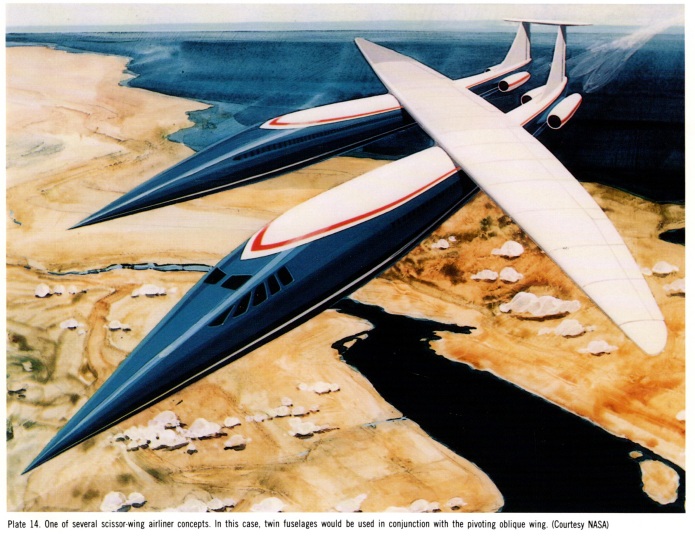A 1970’s Boeing concept for a variable geometry supersonic transport. Once the Boeing 2707 was cancelled in the wake of the oil crisis, any further work on supersonic transports focused heavily on “how do we make this more fuel efficient.” One approach was to go back to variable geometry, which had been dropped from the SST program when the 2707-200 was replaced with the 2707-300. The swing-wing of the -200 worked wonders for the low speed performance of the aircraft, but played hell with cost and weight, enough so that the -300 had a fixed modified delta wing.
The solution shown below linked a few technologies. One concept that showed promise was the “oblique wing,” as tested on the AD-1. A single-piece stricture connected to the fuselage at a single pivot point; much lighter and simpler than a traditional two-pivot swing-wing. With sufficiently rigid structures – think “carbon fiber” – the forward-swept portion could remain reasonably flat even at high speed. But this concept went one step further and linked *two* fuselages to not only a single oblique wing, but also an oblique tail. This would put the “aft” fuselage behind the shock wave shed off the nose of the “forward” fuselage, greatly reducing drag. You’d have the capacity of two SSTs for the operating cost of little more than one. Neat idea… very complex. I’m not sure if it made it much further than preliminary wind tunnel testing.
Full-rez scan uploaded to the 2022-07 APR Extras folder.
